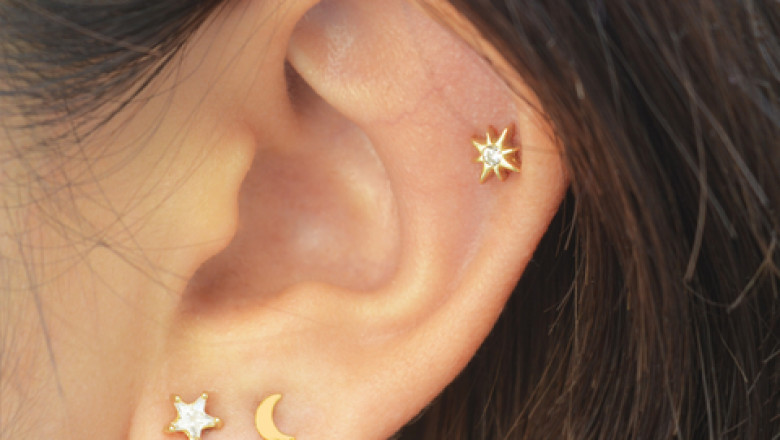views
Changing earrings after a fresh piercing is an exciting milestone, but it requires careful attention to avoid complications. Whether you’ve recently had your ears pierced or are considering making the switch to a new pair, following the right steps is essential for healing and preventing infections. Understanding when and how to change earrings safely can ensure a smooth transition while keeping your Ear Piercing in Dubai healthy.
When Can You Change Earrings After a Piercing?
The healing process varies depending on the location of the piercing and individual skin type. Typically, ear lobe piercings take around 6 to 8 weeks to heal, while cartilage piercings may require 3 to 6 months or longer. It is important to wait until the piercing is fully healed before attempting to change earrings, as doing so too soon can lead to irritation, infections, or delayed healing.
A good way to determine if a piercing is ready for a jewelry change is by checking for signs of healing. If there is no redness, pain, or discharge and the area feels comfortable when touched, it may be safe to proceed. However, if any discomfort persists, it is best to wait longer.
Steps to Safely Change Earrings
Wash Your Hands and Clean the Area
Before handling earrings or touching the piercing, wash your hands thoroughly with soap and water. This helps prevent bacteria from causing infections. Use a saline solution or an antiseptic recommended for piercings to clean the area before and after changing earrings.
Choose the Right Earrings
Opt for hypoallergenic materials such as surgical steel, titanium, or gold to minimize the risk of irritation. Avoid earrings made of nickel or other materials that can cause allergic reactions or sensitivity.
Gently Remove the Old Earrings
If the piercing is healed, hold the earring securely and slowly remove the backing or clasp. Avoid tugging or forcing it out, as this can cause discomfort or even minor injuries to the skin.
Insert the New Earrings with Care
After cleaning the new earrings, carefully insert them into the piercing. If resistance is felt, avoid pushing too hard. Using a twisting motion may help ease the earring in without causing irritation.
Disinfect After the Change
Once the new earrings are in place, cleanse the piercing area again with saline solution to prevent any buildup of bacteria. Avoid touching or twisting the earrings excessively, as this can introduce germs and slow down healing.
Common Mistakes to Avoid
Changing Earrings Too Soon: Swapping jewelry before the piercing has fully healed can lead to infections and prolonged healing times.
Using Unclean Hands: Always wash hands before handling earrings to reduce the risk of bacterial contamination.
Wearing Heavy Earrings: Large or heavy earrings can pull on the piercing, leading to irritation or stretching. Lightweight options are ideal, especially for newer piercings.
Ignoring Signs of Infection: Redness, swelling, pus, or persistent pain could indicate an infection. In such cases, returning to a simple stud and maintaining proper hygiene is recommended.
Aftercare Tips to Keep Piercings Healthy
To ensure a trouble-free experience after changing Ear Piercing Dubai, consider these aftercare practices:
Clean the piercing area regularly with a saline solution or mild antiseptic.
Avoid touching the earrings unnecessarily to prevent bacteria transfer.
Remove earrings carefully if any irritation or discomfort develops.
Choose high-quality, hypoallergenic jewelry for long-term wear.
Conclusion
Changing earrings after a piercing should be a hassle-free process if done correctly. By waiting for the right healing time, following proper hygiene practices, and selecting suitable earrings, you can enjoy a smooth transition while keeping your piercings in great condition.






















Comments
0 comment